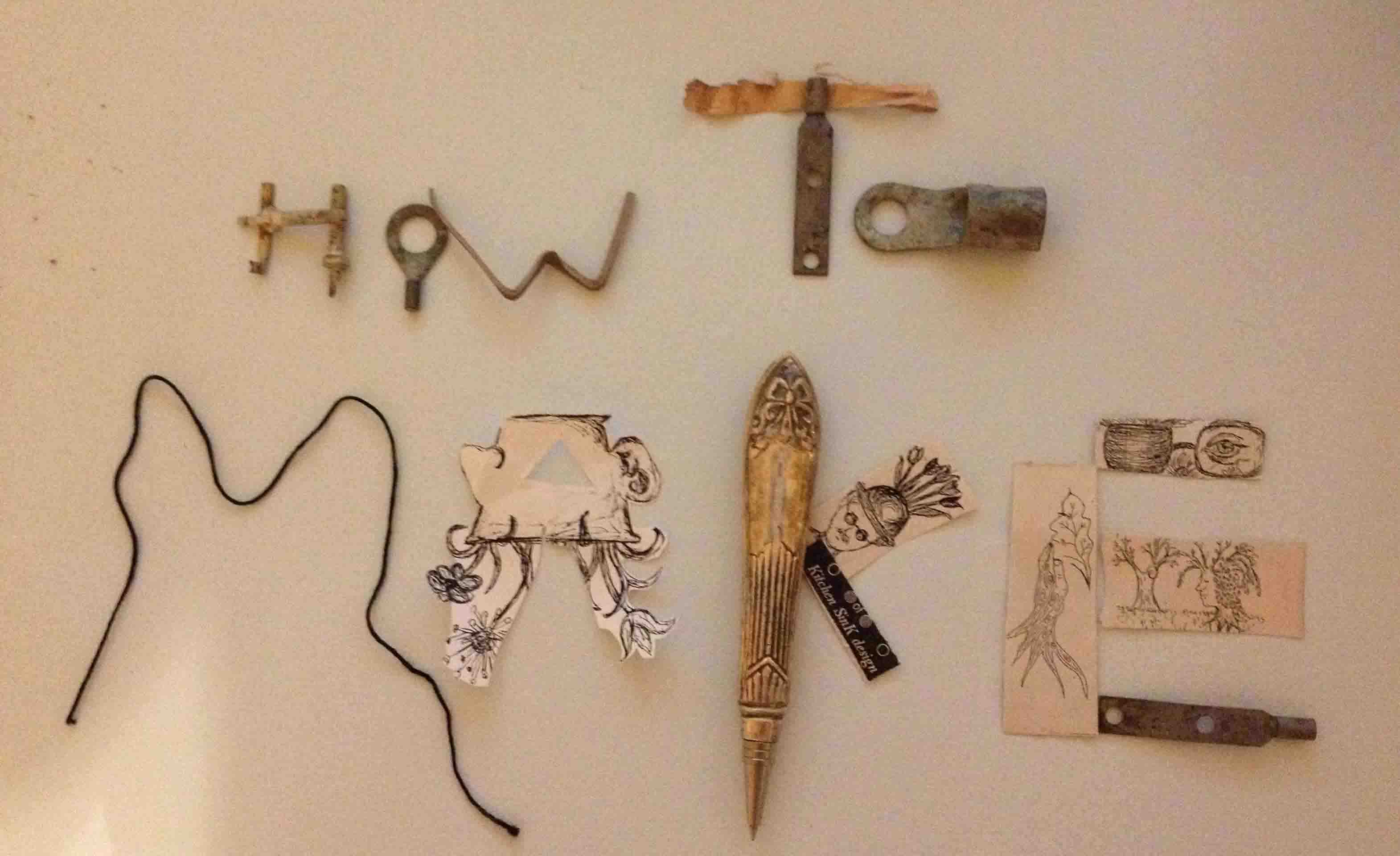
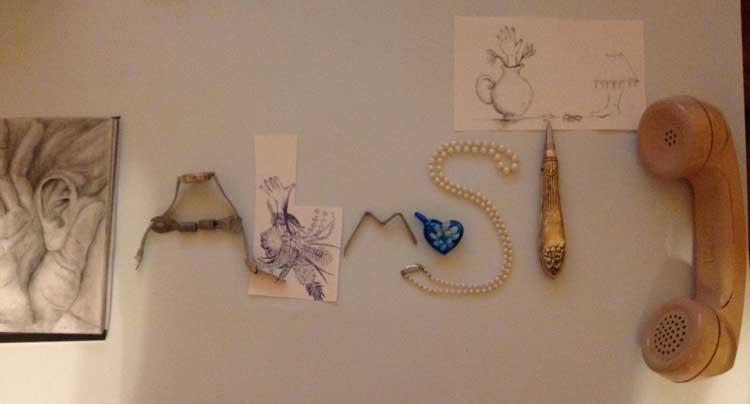
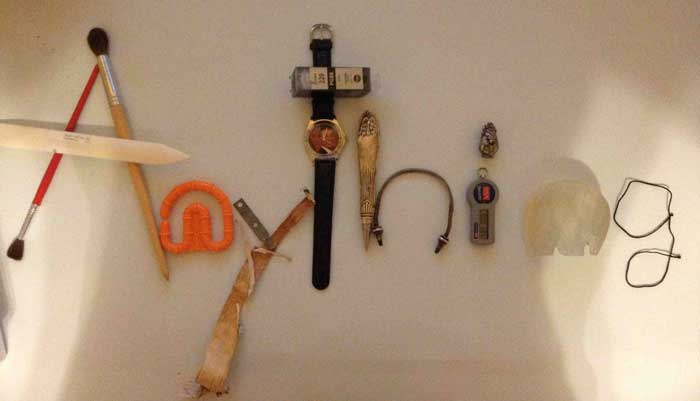



Design an assitive walking device that supports people in various stages of lost mobility. Include sensors to sense if a person is going to fall and a cushion, seat or airbag system that deploys to mitigate the impact of the fall.
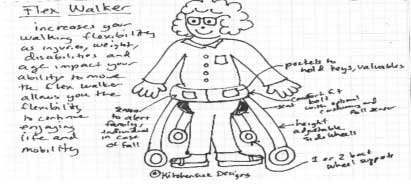
Improve the ability for older, obese or developmentally disabled adults to age in place, maintain mobility and reduce/mitigate falling. Design a device for developmentally disabled children to navigate their spaces more freely and independently.
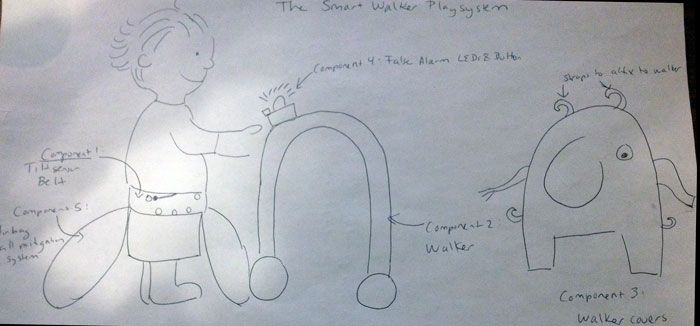
This component will include 2 fabric tilt sensors located on a belt worn around the users waist. The side tilt sensor will indicate if the user is falling backwards or forwards. The back tilt sensor will indicate if the user is falling sideways.
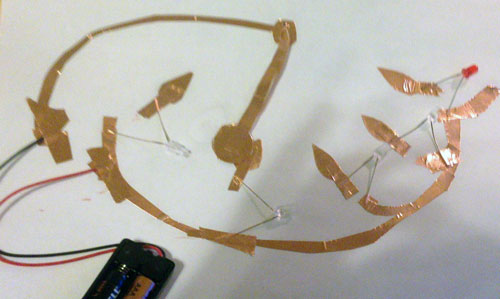
Conductive fabric cut on the laser cutter or vinyl cutter, conductive thread, leds
Input Devices, Computer controlled cutting, electronics fabrication, electronics design
The walker will use press fit construction technique to create a fun, lightweight and approachable walker
pvc pipe, wheels made in molding and casting, 3D printed connector pieces
3D printing, Molding and casting, 2-D design
These walker coveres will be snap on covers for the walker that can change the look and feel for the kid using them. The kids can customize their walkers with racecars, elephants. This design helps the walker appear more toylike and allows the user to better integrate into their environment in a fun and playful way.
acrylic, hydrostone, burlap, foam
3D design, composites
This button will be attached to the walker and will blink red if the user is falling according to the tilt sensor. If teh suer is not actually flling they can push the button indicating it was a false alarm.
Vinyl cut or milled circuit board
Output devices, networking
If the user's tilt sensor ahas indicated a fall and the user did not press the false alarm button the user will deploty thier own air bags for fall mitigation/prevention.tilt_circuit
vinyl?
computer controlled cutting, inflatables, networking, interfaces
Create a walker that supports a person who has lost 1 or more limbs.
Nursing and group homes tend to restrict mobility in otherwise mobile individuals because of liability. A developmentally disabled friend is epileptic and has the ability to walk but cannot navigate stairs and without assistance is a falling risk; therefore she is resticted to a wheelchair or a 2 person escort. This device could help people navigate their spaces more independently with a reduced fear of falling. The walker will help disabled individuals better integrate into community settings.
More people are aging in place and want to stay in their homes; however current walkers are insufficient across multiple terrains (i.e., difficult to handle on carpet, cobblestones, up stairs, etc.), bulky (i.e., many arthritic individuals cannot lift them or collapse them easily) and are difficult to adjust for a variety of body types.
Faling is a common and grave concern for older adults (e.g., a friend's grandfather recently died from a brain contusion related to a fall,another older friend is confined to a wheelchair because he has Alzheimer's and is able to walk but is unstable). A walker that could catch a person during or before a fall could mitigate some of the impact of these serious falls and increae indepence and confidence for older adults.
Obesity is a growing health epidemic in teh U.S. and beyond. A walking systems that allows users to walk with assistance could allow an obese individual who might otherwise be restricted to a wheelchair increased mobility and independence which could lead to improved health and longevity.
A young child eplileptic or developmentally disabled child could use this device with a reduced risk of seizures while still experiencing gains in mobility and independence.



Copyright 2013 Kathy Sinclair